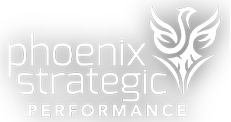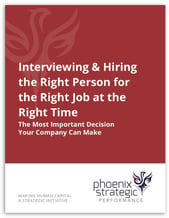Take the Job Description, Performance Review and Development Plan Challenge
It’s Performance Review time for many organizations. However, with the rate of change accelerating and the rate of skills / knowledge obsolescence increasing faster than ever, can you really only review performance once or twice per year? As managers, how can you even justify that ancient practice? Today, continuous performance improvement has replaced the time-honored, annual Performance Review process, so employees continue to be the appreciating human assets that are always aligned with corporate strategy and goals. It may seem like an onerous, time-consuming process, but is it really? When viewed through the lens of great management best practices, let’s shift the performance review paradigm to a continuous improvement paradigm where we treat our employees, our human assets, the same way we look at continuous improvement for processes. Why would we continuously improve processes and not continuously improve people?
Where to Start?
Let’s take the performance management processes out of the HR department and place them squarely under the responsibility of managers since employee performance management is one of the prime job responsibilities of managers. Where do you start with this strategic and holistic approach?
Here is Your 7-Step Process:
Step 1: Establish the Organization Charts – Both Formal and Informal
How your organization works, indicating both formal and informal relationships, is critical. Without a current and realistic organization chart, how can job descriptions be defined?
Step 2: Job Descriptions
How do job roles fit into the organization chart, and how are they defined to truly describe what the role should achieve? Do not make job roles fit the existing employee, which is a common mistake. Make sure to define the job role based on what the role needs to achieve based on the organization’s strategy. Outdated job descriptions need to be reviewed and rewritten to reflect what the job actually does in detail. In changing organizations, job descriptions should be reviewed for changes in responsibilities every 3-4 months. As soon as they are outdated, they are no longer relevant, and are therefore useless.
Step 3: Performance Review
Using the job description as the guide, honestly evaluate the current employee for how they are performing NOW. We often look to an employee’s past performance and automatically think that good past performance applies to the present. It’s referred to as the Halo Effect. Look no further than proficiency in technology skills. These skills can and do become obsolete in a matter of months. At the same time, don’t assess current performance as potential performance. That’s in the future and is based on wishing or hoping. How the employee is doing NOW is the only timeframe that matters.
Step 4: Employee Development Plans
The next step is to develop the employee to fit the job role instead of changing the role to fit the employee, which happens more often than it should. Set up a time-sensitive, highly specific development plan in a logical sequence. Make sure the employee achieves designated goals in the time outlined. This is the point to catch performance issues before they become a problem.
Step 5: Exiting Employees
With continuous employee improvement you can mitigate this risk of letting people go because they are no longer performing. However, for many reasons, an employee is no longer a good fit for an organization and it is time to let an employee go. How do you do this fairly and legally? Go back to the following:
The Job Description
The Performance Review
The Employee Development Plan
When there is no longer improvement, and the employee is no longer aligned with the corporate strategy and goals, you have a ‘best practices’ track record to ensure that you have done everything necessary for the employee.
Step 6: Interviewing and Hiring
The job description is your interviewing and hiring guide to evaluate an employee and their potential to do the job today and into the future. Your performance review process sets an expectation for performance, and your employee development plan sets up the expectation that employees will be expected to grow and develop with the organization.
Step 7: On-boarding
With all the above structures in place, you have created a sequenced on-boarding methodology designed to accelerate an employee’s ability to succeed and excel as soon as possible.
Using the above interconnected steps, you can now transform your organization into a continuous employee improvement organization. Are you ready to take the challenge?
If you're interested in learning more about the importance of strategic leadership and change management as it relates to new and existing employee development, I invite you to download our recent eBook, The Multifunctional Approach to Transformative Leadership. The eBook focuses on employee transition, aligning employees and the change process, personality profiling, and much more.





